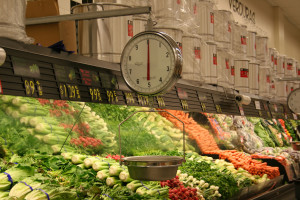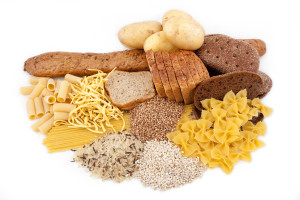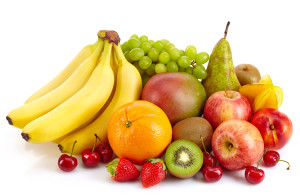


Carbs, carbohydrates, starches and sugars. However you say it, this group of nutrients has gotten some bad press lately! What exactly is a carbohydrate, what foods contain them (because, after all, we eat foods, not just nutrients), and are they really bad?
Carbohydrates are one of the three groups of nutrients that contribute the calories in foods (proteins and fats are the other two). Carbohydrates in foods exist in two basic forms--simple and complex--and that's where the confusion begins.
Simple carbohydrates are the ones you think of as sugar. The most prevalent simple carbohydrate in foods is sucrose (white or table or granulated sugar, brown sugar, as well as the sugar that gives honey, corn syrup, and fruit their sweetness). Sucrose is actually made from two even simpler sugars--glucose and fructose--chemically combined. When you eat or drink sucrose, whether in the form of fruit, sweet vegetables, sweetened drinks, candy, sweet pastries, ketchup, or any of the million other processed foods that have sugar added to them, your body immediately starts breaking it down to glucose and fructose. Regardless of what you may have heard and read, glucose is an important nutrient: Your body, especially your brain, NEEDS glucose to function! Sucrose (sugar) is quickly broken down to glucose and fructose, but for the glucose to be used, your pancreas must send insulin out into your bloodstream (so if you have diabetes and your pancreas doesn't make enough insulin or your organs don't respond correctly to insulin, the sugar doesn't get to where it needs to go, with bad consequences...). Milk also contains a simple sugar called lactose, a combination of glucose and a sugar called galactose; many people lose the ability to digest lactose after the first year of life, resulting in "lactose intolerance."
Complex carbohydrates are also called starches and fiber. They are found in abundance in vegetables, grains and grain products (for example flour, bread, pasta, cookies and cakes, cereal, rice), and legumes (like lentils, garbanzos, peas, kidney beans, and peanuts). Starches and fibers are long, chain-like molecules, where each of the hundreds of rings of the chain is actually a molecule of glucose! The difference between starches and fibers is that the glucose rings of fibers are linked in such a way that our digestive systems can't break them apart; as a result, fiber contributes no calories to food. BUT the bacteria that naturally reside in our lower intestines do digest these molecules, with results we are only just beginning to study and understand. Starches, in contrast, are broken down quite efficiently, although slowly, in the digestive tract, producing glucose, which then does all the things the glucose from simple sugars does, just more slowly...The so-called starchy vegetables (like potatoes, corn, winter squash, and carrots) and the grains contain much more starch than fiber, so they provide more calories and cause a greater rise in insulin than do the vegetables like peppers, lettuce, spinach, and celery (which contains almost no starch at all). Fruits also contain starches and fiber, in addition to sugar.
So, you may have gathered by now that almost all foods contain some carbohydrates. And the complex carbohydrate-containing foods--fruits, vegetables, grains, and legumes--in addition to providing the glucose and fiber we need, also provide varying amounts of protein, as well as essential vitamins, minerals, and water! So if you're considering eliminating "carbs," make sure the foods you're limiting are the ones that contain mostly simple carbs (sucrose) and usually some fat: candy, cake, cookies, pastries, and especially sugar-sweetened drinks like non-diet soda...